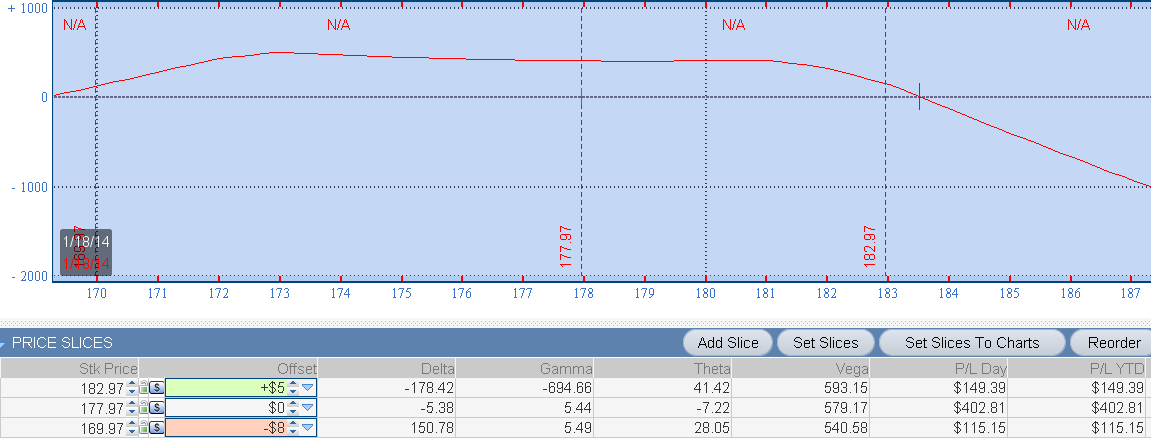Options Trading Strategies What You Need to Know About LEAPS Spreads and Straddles Money Morning
Post on: 10 Июль, 2015 No Comment

display>
There are hundreds of option strategies. And they can be vastly different in terms of tactics and desired outcomes.
But in fact, there are really only a few basic strategies, and everything else is built on these in some form. This range of possible strategic designs is what makes the options market so interesting, challenging, profitable and also nice and risky.
Are you surprised by my characterization of risk as nice?
Well, risk and opportunity are really the same thing, and every option trader needs to accept this.
Because if you want to go fast and get some serious movement, well, you have to climb on board the rollercoaster first, even if it scares you a little bit.
In my last options trading strategies article I took the mystery out of long calls, long puts, covered calls, short puts and insurance puts.
But the truth is those are only five of the eight general strategies (and families of strategies) we use here At Money Map Press.
Today I’d like to tell you about the final three, explaining what you need to know about LEAPS, spreads, straddles.
Let’s get started with LEAPS.
Understanding LEAPS Options
This strategy can be an attractive alternative to the otherwise very short lifespan of most options. And the potential for gains in either long or short LEAPS trades is substantial.
The LEAPS . or long-term equity appreciation securities contract, is simply a long-term option.
They are available, as calls and puts, on 20 indexes and approximately 2,500 equities. The life span of a LEAPS option is as long as 30 months. In the options world, that is something akin to forever.
LEAPS provide a lot of interesting strategic possibilities. You can open long LEAPS call positions as a contingent purchase strategy, so 100 shares can be bought in the future. Or you can buy puts as insurance or as contingent sales positions.
The big disadvantage of a long-term option is going to be the very high time value you have to pay for the luxury of a long-term play. This is true, at least, if you buy long-term contracts. But if you sell them instead, that high time value works in your favor.
That’s why my favorite way to play the LEAPS is to sell an ATM call. Your return can be significant. And the premium provides a cushion that makes LEAPS sales very desirable, especially if it’s part of a long-term contingency plan.
If you are willing to sell shares at a specific price at any time between now and two years from now, selling a LEAPS option brings in high current income and a desirable exposure to exercise.
Let me show you how this works.
In mid-February, shares of Google Inc. (NasdaqGS: GOOG ) were at $610. The January 2014 610 call was trading at 99.60 just under $10,000 per contract.
If you sell that call, that’s a 16.3% return based on the strike, or 8.5% annualized [(16.3 ÷ 23 months) x 12 months = 8.5%]. So if you bought Google shares anywhere at or below $610, this is a very attractive net return.
There is also the chance that the stock price will decline below $610 over the coming 23 months. In that case, the premium value of the call would decline, and you could close your position for a nice profit.
Next, I’m going to explain the basics of spreads and straddles. That’s where the hedging potential of these combined strategies comes in
Understanding Spreads
You enter a spread by buying and selling an equal number of calls or puts on the same underlying, but with a different strike or expiration.
Spreads come in many variations. But there are some common features, like the combined positioning of offsetting calls, puts, or both, and in configurations both above and below the current value. This price cushion makes spreads attractive on both long and short sides.
The best way to analyze spreads, and to decide which one is a good match for you, is to study profit zones and loss zones.
A long spread is constructed with a long call and a long put. Of course, you will pay a premium to own both. This sets up a loss zone in a middle range between the two strikes, and extending above and below those strikes the number of points paid for the options. If you open a long spread, you have to expect considerable price movement before expiration.

A short spread also creates income from selling both a call and a put. Your profit zone is created both above the top strike and below the bottom strike, equal to the premium you get when you open the short spread. So long as the underlying market price remains in between the strikes, there is no exercise risk. Even in the event of exercise within this range, of either option, the premium income covers you. However, if the underlying price moves above or below this middle-range profit zone, then it becomes a loss zone. And the farther it moves, the greater the loss.
On short spreads, you can mitigate or defer that loss zone by either closing one of the short positions, rolling forward, or covering the short (with stock purchase in the event of the short call, or in either case with a later-expiring long option). Spreads of this type with the same expiration but different strikes are called vertical spreads .
Horizontal spreads (also called calendar or time spreads ) have the same strike but different expirations, and can be either long or short. I’ll give you an example of one in the next chapter.
Spreads with different expiration and different strike are called diagonal spreads . and also can be either long or short.
Understanding Straddles
Straddles are similar to spreads, but they have the same strike and expiration. What’s especially appealing about straddles is, you can profit based on how much the underlying moves regardless of the direction of the price movement.
A long straddle will have a middle-range loss zone extending both above and below the strike by the number of points you pay for the two options. If the underlying price moves above or below this middle loss zone before expiration, your profit zone is set up. Long straddles can also be timed to take advantage of volatile price swings in the underlying.
In a short straddle . the premium you get for selling the call and the put set up a profit zone extending from the strike, both above and below. The zone covers the same number of points as the premium you received. So if your total premium was 7 and your strike was 30, your profit zone extends from the high of $37 per share, down to $23 a range of 14 points. If the underlying closes within this range, you earn a profit. Your breakeven prices, before deducting trading costs, are $37 and $23. If the underlying price moves above $37 or below $23 by expiration, you will have a loss.
The short straddle can avoid exercise on both sides. Either side can be rolled forward if the underlying price moves too far in the money (it will always be ITM on one side or the other).
It can also be closed. If time value has evaporated, even an ITM short option might be closed at a small profit. Or, as long as the price is within the profit zone, accepting exercise produces a net profit due to the combined premium income from selling the two options.
As you can see, options are amazing, versatile tools. They can be very speculative and high-risk and give you spectacular returns.
That’s why we created our free investor guide, The Power of Options you can receive your free copy by clicking here .
Related Articles and News :
- Money Morning:














